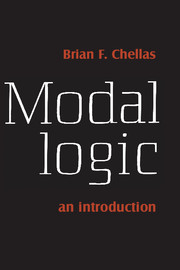Summary
In this chapter we introduce the subject of modal logic by surveying some of the main features of the system of modal logic known as 55. This system is but one of many we shall study. Because it is one of the simplest, we choose it to begin with.
The system S5 is determined semantically by an account of necessity and possibility that dates to the philosopher Leibniz: a proposition is necessary if it holds at all possible worlds, possible if it holds at some. The idea is that different things may be true at different possible worlds, but whatever holds true at every possible world is necessary, while that which holds at at least one possible world is possible.
In section 1.1 we develop this semantic idea by means of a definition of truth at a possible world in a model for a language of necessity and possibility. This leads to a definition of validity, and we set out some valid sentences and principles governing validity, as well as some examples of invalidity.
The totality of valid sentences forms the modal logic S5. In terms of the principles set out in section 1.1 it is possible to deduce all the valid sentences. Some evidence of this appears in section 1.2, where we take the principles in section 1.1 as axioms and rules of inference, formulate S5 as a deductive system, and derive a number of further principles.
- Type
- Chapter
- Information
- Modal LogicAn Introduction, pp. 3 - 24Publisher: Cambridge University PressPrint publication year: 1980
- 8
- Cited by



